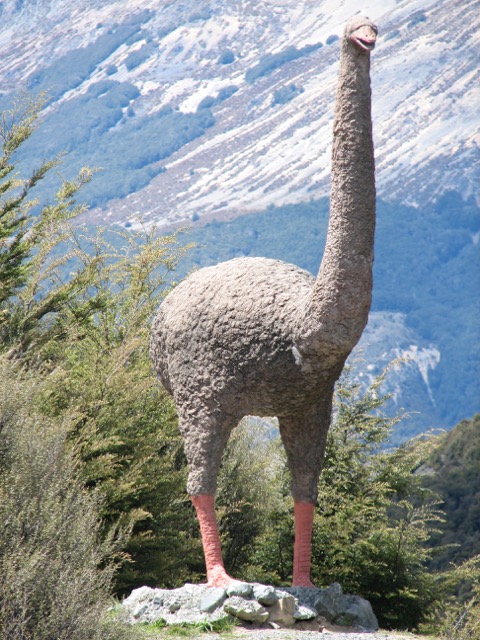Special report
A PhD thesis in biological sciences at the University of Waikato has highlighted the adaption of New Zealand’s vegetation to browsing first by moa over a period of millions of years and more recently by wild deer and other wild animals over the last 150 years.
Genetics research by Kevin Maurin recently investigated the evolution of New Zealand plants.
An oft-debated feature has been divaricate plants. Divaricates are mostly shrubs or low trees, very twiggy and often with basket-like entangled structure. Overseas the habit is called “cage architecture”. About 13 per cent of New Zealand woody plant species are divaricates, a much higher percentage than anywhere else.
Early European scientists came up with two theories.
The first held that divaricating was an evolutionary response to browsing by moa birds. The second theory was divaricates are an adaptation to climate.
It seems now both are valid factors.
Kevin Maurin doing his PhD thesis in biological sciences at the University of Waikato, showed that divaricating probably began about 5 million years – not very long in terms of science’s evolutionary time scale.
Five million years ago, NZ was colder and drier thus suggesting climate played a strong role. But moa had browsed shrubs and small trees for much longer than 5 million years ago.
Deer browsing
It was noted that “divaricates are browsed these days by wild deer, but that pressure probably won’t lead to widespread loss because deer, like moa, get better nutrition from other plants”.
Laurie Collins of the Sporting Hunters Outdoor Trust said the findings showed that NZ’s vegetation evolved over millions of years under intense browsing.
Though the several species of moa were the principal browser, there were many others herbivore birds including the extant kereru (pigeon) and paradise shelduck, the kakapo and re-discovered takahe as well as many extinct geese and flightless ducks that have been overlooked as herbivores.
Defences
“Naturally over millions of years, vegetation adapted with defensive mechanisms such as divarication,” he said.
He noted at an ecological seminar in 1986 (Moas, Mammals and Climate Change”) several scientists spoke of browsing.
For example, two scientists (Clout and Hay) in a joint lecture, said “browsing is not new to the NZ flora —browsing habits of animals (e.g deer) are not
too dissimilar from those of lost avi-fauna (moas and others), natural soil and water values might not be comprised, were animals left to achieve stable populations.”
Laurie Collins said browsing was undoubtedly an important part of New Zealand’s ecosystem functioning whether by deer or birds.
<c> Several million moa of several sub-species browsed NZ vegetation for about 50 million years.


Trying to get that message through to the twitter and twiggys is like trying to fart against thunder.
time we realize NZ evolved with browsing animals & joined the real world where cult adherence to someancient myth of utopia is put up on a dusty shelf with “Batman”
DOC has at the bidding of its master, Forest and Bird, set up a warped set of values as to which species is desirable and which is to be hated and exterminated. It s very selective. Humans all introduced, are blessed but species like deer, tahr, chamois and possums are vilified. Ecological history such as forests evolving over millions of years, under strong browsing activity, is ignored by Forest and Bird and DOC. Yet the evidence is there but ignored.
Wild animal management has never happened in NZ. Instead it has had a peculiar military flavour about it since it began with the 1930 Deer Menace Conference. It has been conducted after the fashion of a little war complete with the deployment of troops (“pest workers, cullers etc.,) bent on the annihilation of the enemy on all fronts. Now the Nazi like hatred wears new clothes of Predator Free NZ and Pest Free NZ, both with targets of 2050. The ideologues pushing these hate policies and programmes will not be here in 2050 to be held accountable for the ecological damage and the millions of public money wasted.
The words”new clothes” brings to mind the nursery tale “The Emperor’s New Clothes” —
an apt description of the “pest” syndrome.